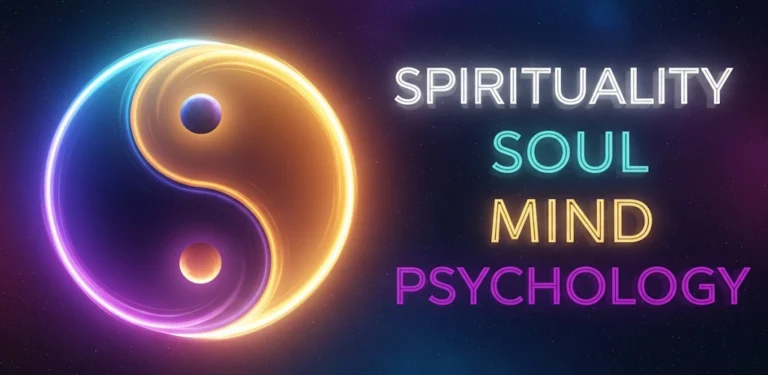
1. What exactly is the “30-Day Stoic Mindset Guide”?
This is a comprehensive, interactive digital program designed to immerse you in the philosophy of Stoicism over 30 days. It’s more than just a course; it’s a structured journey that adapts the timeless wisdom of Stoic masters like Marcus Aurelius, Seneca, and Epictetus into a practical framework for building inner peace, unshakeable resilience, and personal virtue in the face of modern-day chaos. Each day presents a core concept, historical context, a practical exercise, and a journaling prompt to help you actively engage with and embody the philosophy.
2. Who is this guide for? Is it suitable for absolute beginners?
This guide is designed for anyone seeking a more tranquil, resilient, and purposeful life, regardless of their prior knowledge of philosophy.
- For Absolute Beginners: It is the perfect starting point. The guide begins with a foundational “Stoic Resilience Assessment” to get a baseline of your current mindset and introduces core concepts like the Dichotomy of Control and Amor Fati in a clear, accessible manner.
- For Intermediate Students: If you’re familiar with Stoicism but struggle to apply it consistently, the guide’s structured daily exercises, journaling prompts, and thematic weekly focus will help you turn theory into a lived, daily practice.
3. How is the guide structured? What will I be doing each day?
The guide is meticulously structured for a cumulative learning experience, organized into a commencement, four thematic weeks, and a concluding section on lifelong practice.
- Commencement (Assessment): You’ll begin with a “Stoic Resilience Assessment” to get a baseline of your current mindset.
- Week 1: The Dichotomy of Control.
- Week 2: Amor Fati – Loving Your Fate.
- Week 3: Practicing Misfortune (Premeditatio Malorum).
- Week 4: The Sage in the World.
- Eudaimonia (Conclusion): Learn how to continue your journey as a lifelong practitioner of Stoicism.
Each day, you will:
- Read a clear explanation of a core Stoic principle.
- Discover historical anecdotes and parables that bring the concept to life.
- Engage with a “Stoic Inquiry” or reflection prompt.
- Complete a practical “Activity Box” exercise and write in your integrated digital journal.
- Mark the day as complete to visually track your progress.
4. What makes this guide “interactive” and different from just reading a book?
This guide is designed for active engagement, not passive consumption. The interactivity is its core strength and includes:
- Personalized Start: An initial quiz assesses your mindset, and you can retake it at the end to see your growth.
- Integrated Journaling: Each day includes a dedicated text area to write down your reflections and exercise results, saved directly in your browser.
- Progress Tracking: A visual progress bar and completion counter show your journey’s progress.
- Daily Completion: Clickable “Complete Discipline” buttons give you a sense of accomplishment and unlock celebratory messages.
- Multimedia Content: The guide is enriched with embedded audio, including Stoic tales and relaxing music.
- Wisdom Generator: A clickable button provides you with profound Stoic insights on demand.
- Downloadable Certificate: Upon completion, you can download a personalized “Certificate of Stoic Mastery” with your name and date.
5. How much does the guide cost and how do I access it?
The guide is available for a one-time cost of $10.00. Upon purchase, you will receive a password to unlock the full 30-day journey. This grants you complete access to all weeks, daily lessons, interactive features, and the downloadable certificate. There are no recurring subscription fees. In addition, we offer the option to purchase all 4 guides in a single discounted bundle.
6. Can I track my progress? What happens when I finish the 30 days?
Yes. A progress bar visually tracks your completion percentage, and a text counter shows how many of the 30 disciplines you have mastered. When you complete Day 30, you receive a final congratulatory message and unlock the ability to download your personalized certificate. The guide concludes with a special “Eudaimonia” section on how to continue your practice for life.
7. What if I fall behind? Can I do it at my own pace?
Absolutely. While the guide is structured for a 30-day journey, it is entirely self-paced. The content is gated by a single password, not by time. You can take as long as you need to reflect on each day’s lesson, and you can always revisit previous days to deepen your understanding.
8. What specific Stoic concepts are covered?
The guide provides a deep and authentic dive into Stoic philosophy, covering essential concepts often with their original Greek terms, such as:
- The Dichotomy of Control (τὰ ἐφ’ ἡμῖν)
- The Four Cardinal Virtues: Wisdom, Courage, Justice, Temperance (Ἀρετή)
- Amor Fati (Love of Fate)
- Premeditatio Malorum (Premeditation of Evils)
- The Universal Reason (Λόγos)
- Our Faculty of Choice (Προαίρεσις)
- Cosmopolitanism and Connection (Oikeiôsis & Sympatheia)
- Freedom from Irrational Passions (Ἀπάθεια)
9. How are my data and progress stored?
The entire system is cleverly designed to use your browser’s localStorage. This means your progress, completed days, and all your personal journal entries are saved automatically on your device. The “Start Anew” button gives you the option to clear this data if you wish to retake the challenge from the beginning. You do not need to create an account or password for the site itself; your progress is tied to the browser you use.
⚠️ Important: When your data gets deleted
Your saved progress and journal entries will be permanently lost in these situations:
- Clearing your browser’s cache, cookies, or browsing data;
- Using private/incognite browsing mode (data isn’t saved at all);
- Browser automatically clearing data when storage is full;
- Browser settings configured to clear data on exit;
- Switching to a different browser or device;
- For mobile app users: reinstalling the app or clearing the app cache.
💡 Backup recommendation: Since your reflections and progress can’t be recovered once deleted, consider periodically copying your journal entries to a notes app, document, or cloud storage service. This ensures you’ll always have access to your personal insights, even if the browser data is lost.
The system prioritizes your privacy by keeping everything local to your device (we have no access to your data), but this means the responsibility for data preservation rests with you.
10. How does this guide connect Stoicism to modern life?
A key feature of this guide is its ability to bridge ancient wisdom with modern challenges. It does this by:
- Connecting Stoic practices to modern psychology, drawing parallels to Cognitive Behavioral Therapy (CBT) and Acceptance and Commitment Therapy (ACT).
- Applying Stoic principles to modern issues, such as the use of technology.
- Using modern, relatable examples and historical anecdotes (from Vice Admiral James Stockdale to Thomas Edison) to illustrate timeless principles. It also references the work of modern Stoic authors like Ryan Holiday to connect with contemporary discourse.
11. What people took part in developing this guide?
As with all other resources available on our website and official app, this guide has been created through collaborative work by several researchers and scholars from The Spiritual Seek team. The 30-Day Stoic Mindset Guide was primarily authored by Dr. Samuel J. Thomson, Dr. Margaret Benson and Dr. Philip H. Meo. Luke Garrison, the webmaster of our digital platform, offered indispensable technical assistance.
12. Where can I read verified user opinions about this guide?
You can read the opinions of users who have downloaded our official app, Spiritual Personality Tests, and taken the personality tests and 30-day guides within the app itself. These reviews have been collected in several ways: through the Google Play Store and Apple App Store, as well as from other websites and via direct emails sent to The Spiritual Seek staff: read them here.
13. Are there any scientific studies or data that support this guide?
Absolutely. It is based on long-standing knowledge and theories, along with current scientific studies and academic research. Here is a list of the studies and research papers that helped us develop the guide.
14. How does The Spiritual Seek’s Stoic Guide compare to others in the same category?
This guide is far more thorough and comprehensive than similar yet free products. When compared to paid books and courses, it has unique features that make it absolutely one of a kind.
This Guide vs. Traditional Books (e.g., works by Ryan Holiday, William B. Irvine)
Modern authors like Ryan Holiday (whose work The Obstacle Is The Way is referenced in the guide) have done a magnificent job popularizing Stoicism. However, a book is a one-way medium.
- Active Workshop vs. Passive Reading: This guide transforms you from a reader into a practitioner. It’s a workshop, not just a book. Each day requires you to complete exercises and write in a journal, ensuring you internalize the material.
- Integrated, All-in-One System: While you might read a book and keep a separate notebook, this guide integrates the lessons, exercises, and journal into one seamless interface. It also includes multimedia like audio tales and music, something a book cannot offer.
- Structured Accountability: The 30-day progression, visual progress bar, and celebratory modals create a framework of accountability that helps you stay committed, which can be a challenge with a self-directed book.
This Guide vs. Passive Video Courses (on platforms like Udemy, Coursera, Skillshare)
A video course can feel more dynamic than a book, but often still positions you as a passive audience member.
- Deep Reflection over Screen Time: This guide prioritizes deep, written reflection. The physical act of typing your thoughts into the daily journal fosters a more profound level of learning and self-discovery than simply watching a lecture.
- Comprehensive, Actionable Content: Many video courses focus on a single instructor’s interpretation. This guide synthesizes wisdom from all major Stoic figures and provides a wider array of detailed historical parables and specific, actionable drills (like the “Stoic Decision Framework” and “Voluntary Discomfort Drill”).
- Ownership and Accessibility: With a one-time fee of $10.00, you gain permanent access. Many course platforms operate on a subscription model or charge significantly more for lifetime access to a single course.
This Guide vs. Daily Quote & Journaling Apps (from the App Stores)
Stoicism apps on the Apple App Store or Google Play Store are popular for their convenience, but they often sacrifice depth for simplicity.
- A Full Curriculum, Not Just Snippets: A typical app might offer a daily quote and a simple journal. This guide provides a full 30-day curriculum. It explains the rich context behind the ideas, teaches the interconnected system of Stoic physics, logic, and ethics, and builds your knowledge from the ground up.
- No Subscriptions, No Ads: The business model is transparent: a single, low payment for the complete program. Most free apps are supported by intrusive ads or constantly push you toward a recurring subscription for full functionality. This guide provides a focused, ad-free environment.
- A True Sense of Completion: Finishing this 30-day journey is a significant achievement, recognized with a final congratulatory message and a personalized, downloadable “Certificate of Stoic Mastery”. This provides a level of satisfaction and finality that an endless-scroll app cannot match.
In conclusion, The 30-Day Stoic Mindset Guide is uniquely powerful because it integrates the depth of a book, the structure of a course, and the engagement of an app into one cohesive, affordable, and transformative system. It is a complete philosophical apprenticeship designed for lasting change.



